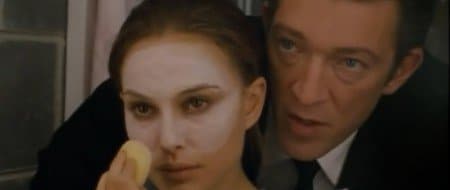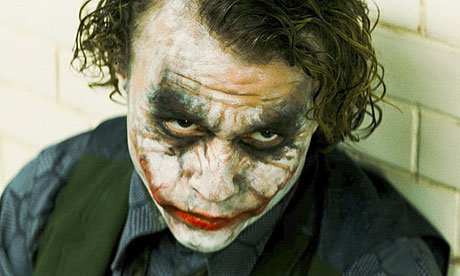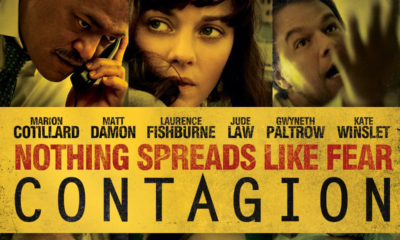Movies and TV
The Occult Interpretation of the Movie “Black Swan” and Its Message on Show Business
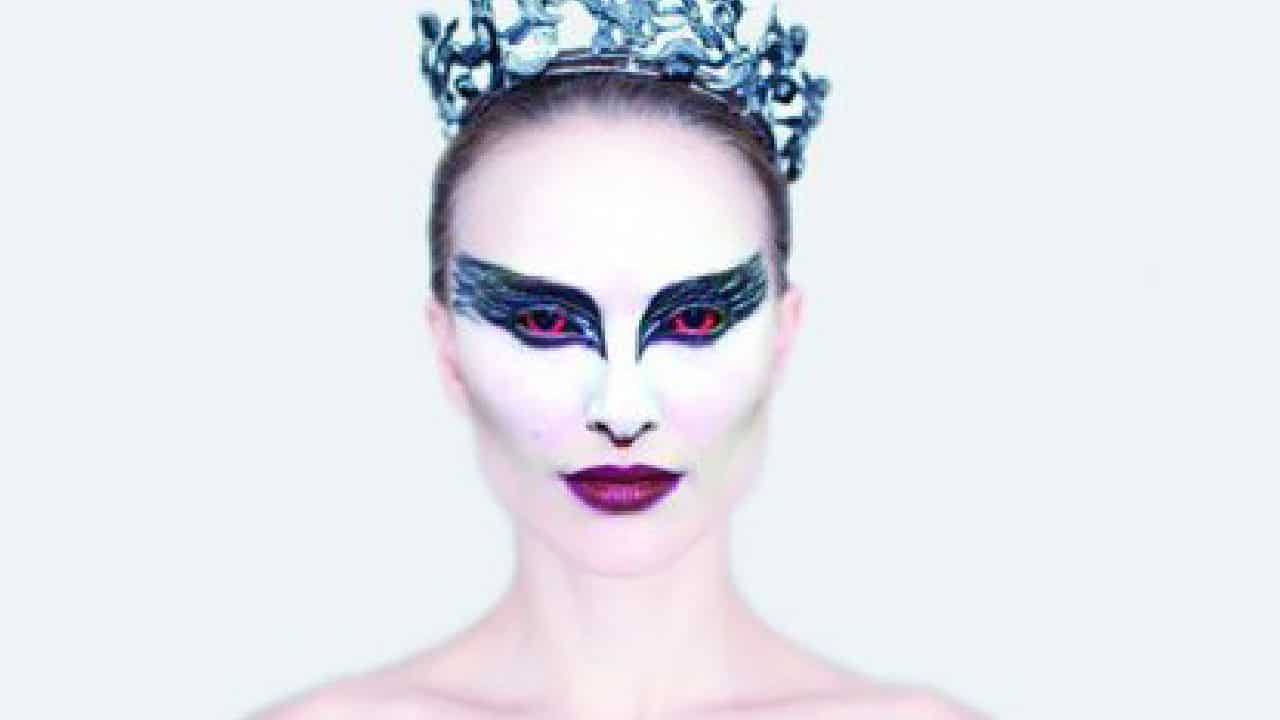
“Black Swan” is an intense psychological thriller describing a ballet dancer’s metamorphosis into the “Black Swan”. Behind the movie’s freaky facade lies a profound commentary on the cost of fame, the sacrifice of artists and the hidden forces behind the shady world of high-stakes entertainment. We will look at the occult symbolism of the movie and its themes relating to the dark side of show business.
Directed by Darren Aronofsky, Black Swan follows the shy ballet dancer Nina on her path to success in the demanding world of professional ballet. Black Swan can be considered a companion piece to the director’s previous movie, The Wrestler, which also describes the ups and downs of a troubled person working in a lesser-known field in the performing arts: professional wrestling. Although both movies explore similar themes (i.e. sacrificing one’s self for the good of the performance), the world in which Nina evolves and the obstacles she must endure are diametrically opposed to those of The Wrestler. Randy “The Ram” Robinson is a blue-collar guy living in a blue-collar town and must cope with the physical pain caused by his blue-collar lifestyle. Nina, on the other hand, performs in the refined world of ballet and her struggles are psychological, emotional and even spiritual.
I often point out that great works of art can be interpreted in numerous ways, depending on the knowledge and experiences of each viewer. This movie is no exception … there are indeed numerous ways to interpret the plot of the movie. Through the use of meanings and symbols, however, the movie clearly alludes to many issues previously discussed on The Vigilant Citizen: the dark and occult side of fame, duality, trauma-based mind control, the forced creation of an alter persona and more. The main character, Nina, goes through a metaphysical change – by getting in touch with her “dark side” – in order to become a better performer. This change is imposed on Nina by her “handler”, in this case, her ballet director. The movie uses subtle references to trauma-based mind control to explain the creation of an independent alter-person in Nina’s psyche.
Although Black Swan is fiction, it nevertheless explores the hidden realities of high-stakes art and performance. There are numerous examples of artists who have embraced darker alter egos to take their art to “another level” … and many who ultimately are consumed by them. We will look at the occult and mind-control elements of Black Swan and see how they relate to some of the realities of the world of professional entertainment.
Warning: Major spoilers ahead!
Movie Summary
Black Swan is a modern retelling of Pyotr Ilyich Tchaikovsky’s classic ballet, Swan Lake. In the movie, the ballet director, Thomas Leroy (played by Vincent Cassel), describes to his dancers the basic plot of the ballet:
“We all know the story. Virginal girl, pure and sweet, trapped in the body of a swan. She desires freedom, but only true love can break the spell. Her wish is nearly granted in the form of a prince. But, before he can declare his love, the lustful twin, the Black Swan, tricks and seduces him. Devastated, the White Swan leaps off a cliff, killing herself and, in death, finds freedom”.
Nina, a shy and fragile young woman is chosen to play the role of the Swan Queen and must, therefore, embody both the pure White Swan and the evil Black Swan. Her quest for perfection as a ballet dancer leads her to experience, in her everyday life, the transformation experienced by the White Swan in the ballet’s story. The events of Nina’s daily life, therefore, mirror the story of the character she takes on as a ballet dancer, ultimately leading to confusion and, as the line between reality and fiction blurs, to apparent insanity.
The director’s use of mirrors and reflections in numerous scenes are a constant reminder of Nina’s altered perception of reality. Mirrors in the movie are often misleading and Nina’s reflections seem to have a “life of their own”. As Nina becomes haunted by the Black Swan, this alternate persona takes a life of its own and acts outside of Nina’s conscious control. We will explain later how this relates to trauma-based mind control.
If you have not read other articles on this site, trauma-based mind control – also known as Monarch Programming – is the process in which an individual is subjected to intense trauma and dehumanization in order to cause a mental dissociation. This causes a fragmentation of the slave’s personality and enables the handler to create an alternate persona that can be programmed at will. Some researchers claim there are occult elements at work in this process.
“Project MONARCH could be best described as a form of structured dissociation and occultic integration, in order to compartmentalize the mind into multiple personalities within a systematic framework. During this process, a Satanic ritual, usually including Cabalistic mysticism, is performed with the purpose of attaching a particular demon or group of demons to the corresponding alter(s). Of course, most skeptics would view this as simply a means to enhance trauma within the victim, negating any irrational belief that demonic possession actually occurs.”
– Ron Patton, Project Monarch
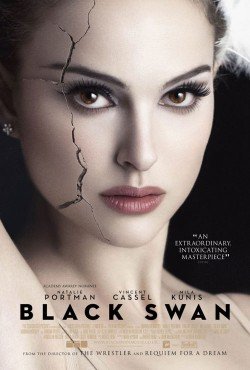
A promotional poster for Black Swan. Nina (played by Natalie Portman) is shown with a crack in her face, representing the fracturing of her personality, an important concept, and symbol of mind control
Let’s now look at some central themes of the movie.
Nina and her Trauma
Nina lives in a small New York apartment with her mother, Erica, about whom the least we can say is that she is overbearing. Many allusions to trauma-based mind control can be found in Nina’s living environment and her mother’s controlling behavior.
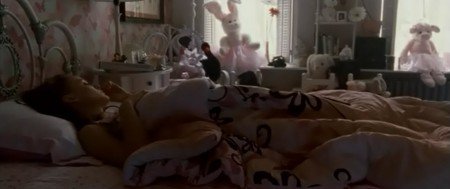
Nina’s bedroom. Notice the butterflies on the wall, a reference to Monarch programming. Next to the window is a big white rabbit, a symbol of mind control originating from Alice in Wonderland – a fairy tale used in the programming of MK slaves. By following the White Rabbit Alice is lead to an alternate world, Wonderland, which, in mind control terms, refers to a slave’s dissociative state.
Nina’s mother, a retired ballet dancer who failed to become a star, acts more as a mind-control handler than a mother. She obviously has boundary issues and keeps tight control over all aspects of Nina’s life. Real-life Monarch slaves often start their difficult lives as victims of ritual abuse in their own household. Symbols relating to mind control in Nina’s house probably reflect this sad reality, including her pink, childlike bedroom.

Every night, Erica Sayers winds up the music box next Nina in order to make the little ballerina dance. This is quite symbolic of Nina’s mind-controlled state.

Erica Sayers, Nina’s mother, forcibly undressing her adult daughter. This unsettling scene depicts to Nina’s total submission to her mother and also hints to the unhealthy sexual “familiarity” between the two.
Other people in Nina’s life, apparently preying on her weakness and “victim energy”, take advantage of her sexually.

An old pervert makes obscene gestures to Nina while riding the train. This disturbing scene tells a lot about Nina’s relation to sexuality. Sexual predators sometimes have the sick ability to sniff out and prey on sex-abuse victims.
Nina’s mother has, therefore, subjected her daughter to trauma-based mind control in order to make her a submissive woman who would realize her mother’s failed dreams. This has trained Nina to disassociate to make her existence bearable, which in turn makes Nina the perfect subject for the creation of a dark alter persona: the Black Swan.
Bringing out the Black Swan
Getting back to the storyline, Thomas, the ballet director, is looking for a new ballet star play the role of the Swan Queen. Nina’s meticulous dancing is perfect to play the role of the White Swan, but she must also be able to play the Black Swan, a role that requires the dancer to be twisted, sexual and dangerous. Nina’s frigid style is not suitable for the Black Swan, but Thomas chooses her as the Swan Queen anyway. He knows she has it in her, and he will bring it out.
At one point, Thomas tells Nina:
“Perfection is not just about control. It is also about letting go. Surprise yourself so you can surprise the audience. Transcendence. Very few have it in them.”
Watching Nina dance, he later says:
“I knew the White Swan wouldn’t be a problem. The real work would be your metamorphosis into her evil twin.”
In order to obtain perfection, or in alchemical terms, to accomplish the Great Work, Nina must master both good and evil – light and darkness. The occult concept of duality becomes therefore extremely important (more on this later).
Thomas’ job is to create in Nina a new, aggressive and sexual alter-ego. He, therefore, becomes Nina’s new mind-control handler. Whereas her mother “programmed” her daughter to be a submissive ballet dancer who never questions her mother/handler, Thomas requires her to embrace the exact opposite. He represents the “big league”, the next level of Monarch programming.
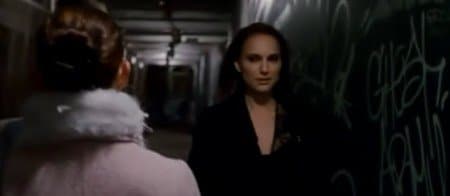
After her meeting with Thomas, Nina, dressed in white, crosses the path of another Nina, dressed in black. This symbolically represents the coming of Nina’s new, dark alter-ego.
In order to become a Black Swan, Nina must be able to be somewhat comfortable with sex and even enjoy it. So Thomas gives Nina homework: to “touch herself”. Ready to do everything to become a better dancer, Nina tries to masturbate but her mother causes a blockage. Sexual pleasure becomes, therefore, a form of emancipation from her mother’s control and her initiation to the “big league”.
As the Black Swan grows in power, Nina starts hallucinating physical mutations on her body. The only other person that can see these mutations are Nina’s mother, who, as a handler, has the “key” to her psyche. She is aware of Nina’s gradual transformation and tries to repress it, knowing it will cause the loss of her “little girl”.

Nina hallucinates all kinds of strange mutations on her body. They represent the gradual coming out of the Black Swan in her.
This situation reflects the ugly truth behind the real-life ritual abuse. Children, who are already dissociative due to their parent’s abuse, are handed over to “higher instances” who continue the programming process. In this case, Nina is handed over to the entertainment world (known to use Monarch programming on celebrities) to create in her an alter persona destined to be a world-renowned star.
In order for Nina to become the new Swan Queen, however, someone must step down.
Beth MacIntyre: The Ageing Star Who Was Pushed Aside

Beth MacIntyre at Nina’s crowning ceremony. She has just learned she is no longer the Swan Queen. She is obviously not happy.
Beth MacIntyre (played by Winona Ryder) is the previous star of the ballet company. However, she is growing old and “losing her edge”. As a veteran, Beth already went through the “Black Swan process”, and, as some people might say, she “sold her soul to the devil”. Although this deal gave her years of great performances, in the end, the process completely destroyed her. She has become a bitter, conceited and hateful person who is incapable of existing without being the Black Swan.
There are many real-life cases of celebrities suffering the same fate. After being recruited, programmed and primed by the industry to become a superstar, they are suddenly dropped and forgotten. Being psychologically damaged, not knowing who they really are, the fallen stars sink into depression, drugs, alcoholism and even suicide.
Thomas, who was Beth’s handler (he called her “my little princess”, a mind-control trigger) no longer needs the alter-ego he created in her. It is however impossible to “deprogram” her, so she completely loses her mind. The next day, the ballet company learns she got hit by a car. Thomas says:
“You know what, I’m also sure she did it on purpose. Everything Beth does comes from within, from some dark impulse. I guess that’s what makes her so thrilling to watch … so dangerous … even perfect at times. But also so damn destructive.”
So the “spirit”, the alter ego that consumed and destroyed Beth, was also the hidden force behind her great performances. The public has always been fascinated by intense and inspired performers who touch them on a primal and visceral level. Depending on the performance, this source of artistic transcendence has been attributed to the divine or to the devil. Controversial and groundbreaking performers have often dwelt between brilliance and insanity – tapping into a mysterious force at the source of artistic greatness and, on the other hand, imminent self-destruction. Religious people might say this force is nothing less than spirit possession; scientists might say that psychological torment leads to creativity. No matter the term one uses for this “force”, it certainly exists and it is tapped into by some of the world’s most influential artists. Beth hosted this force and it completely destroyed her … and now it can move on to Nina.
The Black Swan Takes Over (Black Wings and Mirrors)
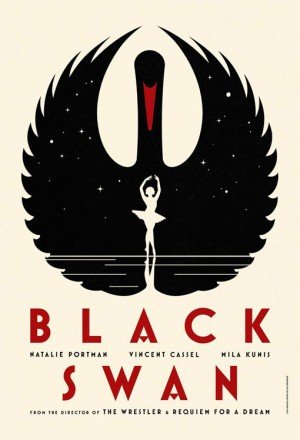
A symbolic movie poster. From the little ballerina rises, as a phoenix from its ashes, a gigantic and menacing Black Swan.
The Black Swan is the artistically brilliant yet spiritually destructive force Thomas wants to see born in Nina. He obviously knows about the Black Swan’s devastating powers, but he doesn’t care and never did: he is after the ultimate performance. Once Nina has been “used” up by the Swan, he will find another dancer to replace her. He is a representation of the entertainment industry, which manipulates artists into becoming Black Swans, ultimately trashing them when the Swan’s effects have faded.
Black Wings
The “force” of the Black Swan is symbolically represented by black wings at different stages of the movie.
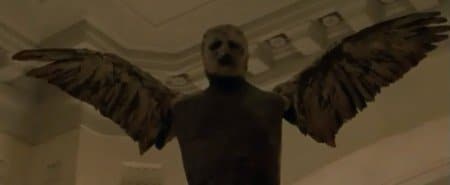
Shortly after being crowned “Swan Queen”, Nina is fascinated by this creepy statue. Little does she know that it represents what she is about to become.

Black wings on the back of Lily (played by Mila Kunis) while she is “giving pleasure” to Nina. The black wings represent the “force” that is communing with Nina. It is penetrating her, giving her orgasm, but also taking over her life.
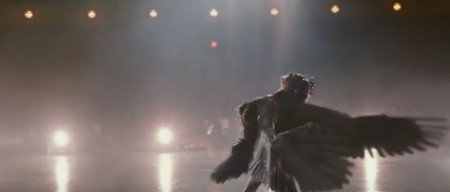
Nina at the end of her “perfect” performance as the Black Swan. She is briefly shown with black wings, symbolizing that she has become “one” with the Black Swan.
Mirrors
Mirrors are used throughout the movie to symbolically reflect the true state of Nina’s psyche.
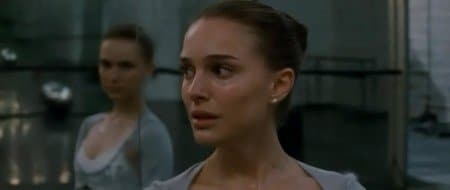
Creepy mirror reflection that has a mind of its own. As her metamorphosis advances, Nina realizes that a totally separate entity is living within her. It is completely acting outside of her control. In mind-control symbolism, mirror reflections represent a slave’s alter-persona that is programmed and manipulated by a handler.
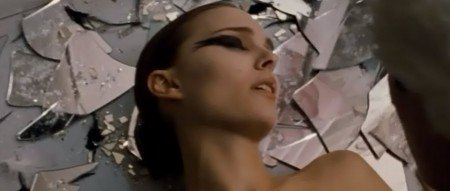
Right before her big performance as the Black Swan, Nina fights against herself in her dressing room. During the fight between Nina and the Black Swan, mirror breaks, representing the collapse of the psychological boundary separating both entities. By shattering the mirror, Nina becomes the Black Swan.
The Magnum Opus and the Sacrifice
At the show’s premiere, Nina gives a stellar performance. She successfully plays the sweet and timid White Swan, and, when the time came, she was overtaken by the “force” to become the twisted, yet thrilling, Black Swan. By marrying the white and the black, the good and the evil, the light and the dark, Nina has accomplished the alchemical Great Work, the occult path to illumination.
The process, however, consumed her. By allowing the Black Swan to completely possess her, Nina gave the performance of a lifetime, but she has become a different person. Thomas and the audiences are in love with Nina as the Black Swan – the same way the prince of the ballet falls in love with the White Swan’s evil twin. But this is not the “real” Nina. The Black Swan is a destructive force she cannot live with: it is tormenting her on a physical and psychological level. Not able to go on, the only way Nina can free herself, is by killing herself. And this is what she does.
Does this remind you of anyone else’s self-sacrificing performance?
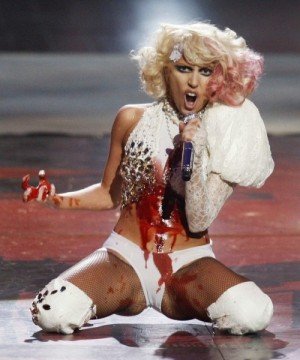
Lady Gaga “sacrificed” in her performance at the 2009 VMA’s.
Real Life Black Swans
There are real (and tragic) examples of brilliant artists who have been consumed by an intense role. Either they self-destroyed or they HAD to die as a ritual sacrifice. Is Black Swan a commentary on this mysterious phenomena?
A recent example of a self-destructive role is Heath Ledger’s Joker in The Dark Knight.
Jack Nicholson warned Heath Ledger on ‘Joker’ role
Heath Ledger thought landing the demanding role of the Joker was a dream come true – but now some think it was a nightmare that led to his tragic death.
Jack Nicholson, who played the Joker in 1989 – and who was furious he wasn’t consulted about the creepy role – offered a cryptic comment when told Ledger was dead.
“Well,” Nicholson told reporters in London early Wednesday, “I warned him.”
Though the remark was ambiguous, there’s no question the role in the movie earmarked as this summer’s blockbuster took a frightening toll.
Ledger recently told reporters he “slept an average of two hours a night” while playing “a psychopathic, mass-murdering, schizophrenic clown with zero empathy …
“I couldn’t stop thinking. My body was exhausted, and my mind was still going.”
Prescription drugs didn’t help, he said.
– NY Daily News, Source
For more on Heath Ledger, read this article I wrote on his last movie and symbols regarding his sacrifice “The Imaginarium of Doctor Parnassus” and Heath Ledger’s Sacrifice.
Another example of an actor dying in mysterious circumstances after playing the role of a devilish and twisted character is Brandon Lee as The Crow.
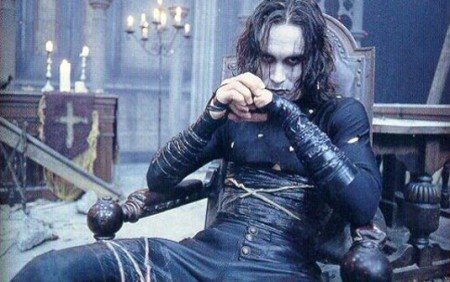
Brandon Lee mysteriously died during the filming of The Crow. The official story of his death is still widely disputed. The scene during which he died was highly symbolic.
In addition to those two extreme cases, there are many cases of artists who, after years of brilliance, mysteriously self-destroyed. Drugs and suicide are often blamed for the tragedies but who really knows what happened with Jimi Hendrix, Kurt Cobain and Jim Morrison, just to name a few?
In Conclusion
Black Swan is a profound movie that can be interpreted on many levels. We looked at the occult and mind-control elements of the movie and examined its messages on the shady world of show business. The movie’s commentary on the entertainment world’s marriage with occult forces is something that has been discussed numerous times on the Vigilant Citizen. Although the concept is rarely discussed or even noticed by the average person, insiders in the entertainment world often attest to strange forces of varying kinds at work in the industry.
Through Nina’s metamorphosis from a shy nobody to a possessed superstar, the viewers experience the dark side of entertainment. Mind control, manipulation and immorality collide with success and recognition. Dark impulses, addictions, and self-destruction arise with artistic genius and creative brilliance. Those who are “running the show” know how to bring the Black Swan out of up-and-coming artists … and they know very well it will destroy them in the long run. And they are OK with that. The same way Beth was pushed aside to welcome a new Swan Queen, the public will always welcome the elite’s newest star with applause and acclaim. Because, as they say, the show must go on.
- Mockery Ensues
- Official seal of the University of Chile
- New footage shows debauched birthday party Diddy threw for Meek Mill
- The Economist / 2025 / The World Ahead
- Justin Trudeau claims fighting climate change is more important than feeding your kids
- Suspect at center of ISIS inspired Election Day terror plot previously worked for the CIA
- Nina Saemundsson's "Prometheus Bringing Fire" (Los Angeles McArthur Park, circa 1937)
Get an e-mail notification as soon as a new article is published on The Vigilant Citizen.
-

 Latest News2 months ago
Latest News2 months agoThe Controlled Demolition of Diddy
-
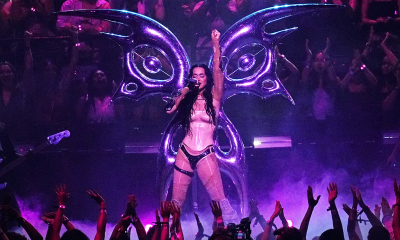
 Music Business2 months ago
Music Business2 months agoThe Hidden Meaning of Katy Perry’s Highly Symbolic Performance at the 2024 VMAs
-
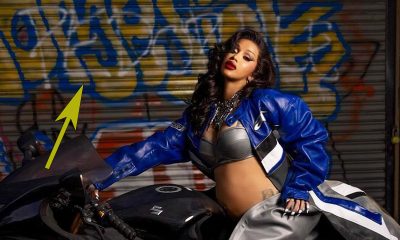
 Pics of the Month2 months ago
Pics of the Month2 months agoSymbolic Pics of the Month 09/24
-
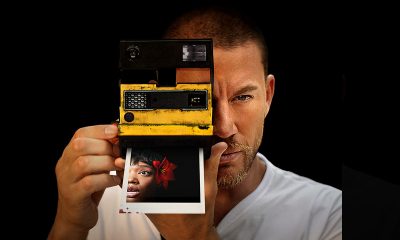
 Movies and TV1 month ago
Movies and TV1 month agoAn In-Depth Look at the Hidden Meaning and Symbolism in “Blink Twice”
-

 Pics of the Month4 weeks ago
Pics of the Month4 weeks agoSymbolic Pics of the Month 10/24
-

 Music Business3 months ago
Music Business3 months agoSomething’s Terribly Wrong With Sabrina Carpenter and her Video “Taste”
-

 Movies and TV2 months ago
Movies and TV2 months agoAn In-Depth Look at the Dark Messages and Symbolism in “Longlegs”
-

 Latest News2 weeks ago
Latest News2 weeks agoKamala’s Campaign Was Objectively the Worst in Recent History
